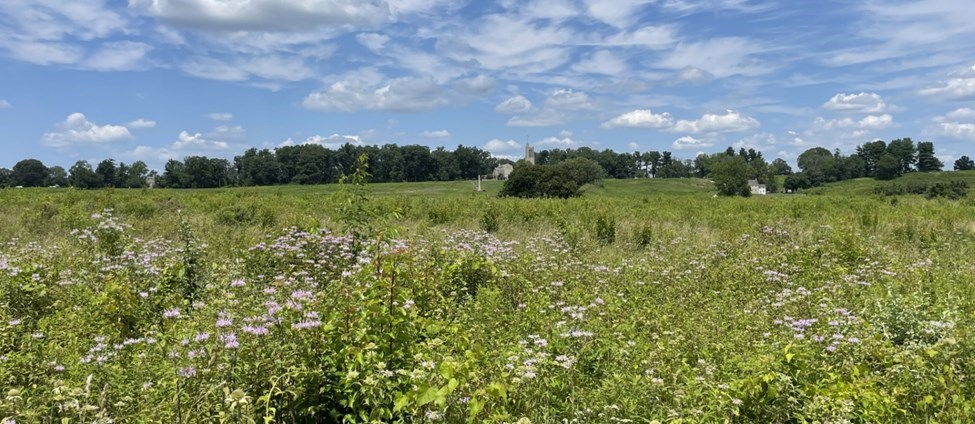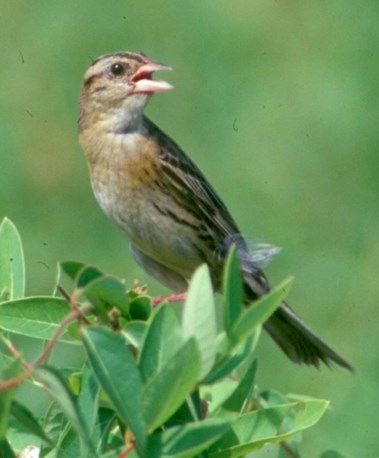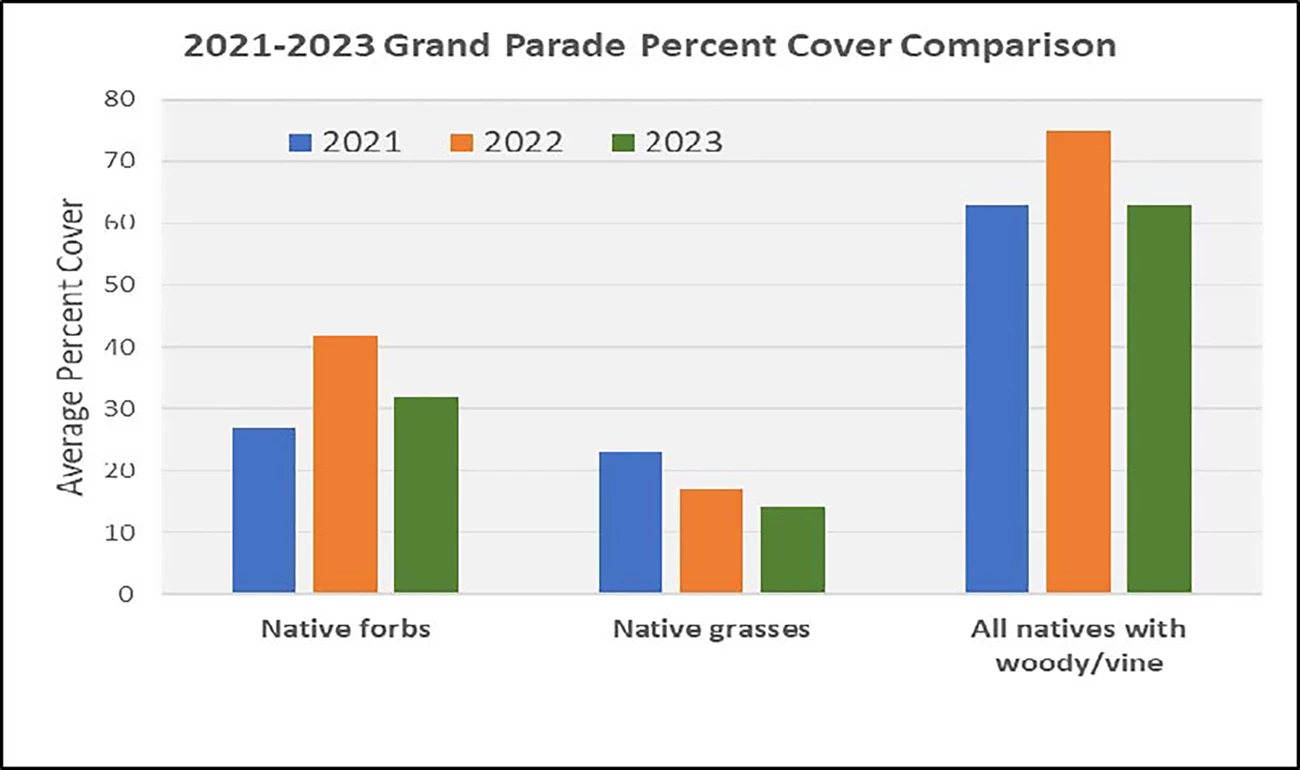Last updated: May 21, 2025
Article
Meadows Resource Brief 2023

NPS Photo / L. Schmel
Meadow Resources at Valley Forge
Current management objectives focus on managing this landscape in such a
way that it retains its historic appearance while promoting high habitat
values and native plant communities, which in turn support ecologically
important bird and insect species.

NPS Photo / L. Schmel
Objectives of the Meadow Management Plan
-
Enhance grassland value by increasing native biodiversity
-
Preserve and restore native plant and animal populations and their habitats
-
Maintain and improve cultural resources
To measure how well the plan objectives are being met, data are collected from 177 points across park meadows. Using a 5m by 5m grid, researchers document which native and invasive plant species are present and the percent cover for each.
These data help the park determine if the grassland plant communities have the necessary native species and diverse mix of food plants needed to support native wildlife species, including populations of special status plant, butterfly, and bird species.

Bill Moses
Meadow Restoration Techniques
There are a variety of approaches currently in use at Valley Forge for meadow restoration. Overall, management is two-pronged: suppress non-native invasive plant growth while encouraging native grasses and flowering plants to grow.
For invasive plant suppression, fields may be treated with alternating mowing regimes, haying (removal of plant material from area), manual cutting and removal, controlled burns, or chemical control by application of targeted herbicides on select species.

NPS Photos / L. Schmel

shown above, form dense monocultures that frequently outcompete shorter native plants such as Indian Tobacco (Lobelia inflata) shown below. The invasives often have no natural predators, allowing them to proliferate.
NPS Photo / L. Schmel
Sometimes, suppression of non-native plants is enough to allow the native seedbank in the soil to germinate and grow. Other times, native grass and flowering plant seed is sown directly into the soil of areas where invasive plants have previously been removed. Reduction of deer helps native forb populations in the meadows.
The Grand Parade
The Grand Parade is Valley Forge’s most culturally and ecologically significant meadow. Once the location where General Friedrich von Steuben drilled soldiers during the Valley Forge Encampment, it is now the largest meadow habitat within the park at over 300 contiguous acres. Much effort has been put into restoring its historical and environmental value in the last several years.
Recent data indicate that the percent cover of native forb (herbaceous flowering plants) and woody species has maintained or increased since 2021. This year saw a large decrease in invasive Japanese stiltgrass (Microstegium vimineum) cover by almost 50%.

NPS Graphic

NPS Photo / L. Schmel
Metrics of Meadow Restoration
The most recent data available (2023) indicates that the meadows are already reaching some desired thresholds*. The very mild winter with no snow events, dry conditions throughout spring 2023, followed by heavier rains in early summer led to some changes in the plant communities.
Presence of Native Field thistle (Cirsium discolor), image on the left, meets the criteria for “good” and native Ragwort percentage nearly doubled. Thistles and ragwort are key larval food and nectar sources for butterflies and other pollinators throughout the season. Ragwort appears early in the growing season, and thistles bloom into the fall. The meadows provide invaluable habitat, food, and breeding ground for many migrating species.
Native wildflower seeds were collected by NPS staff to be distributed to areas of low diversity in the future. New in 2023: All three meadow indicator bird species, Bobolinks, Meadowlarks, and Grasshopper sparrows, have been observed in our meadows!
*Thresholds from ‘Desired Meadow Condition Report’ for Valley Forge, Latham, 2012
